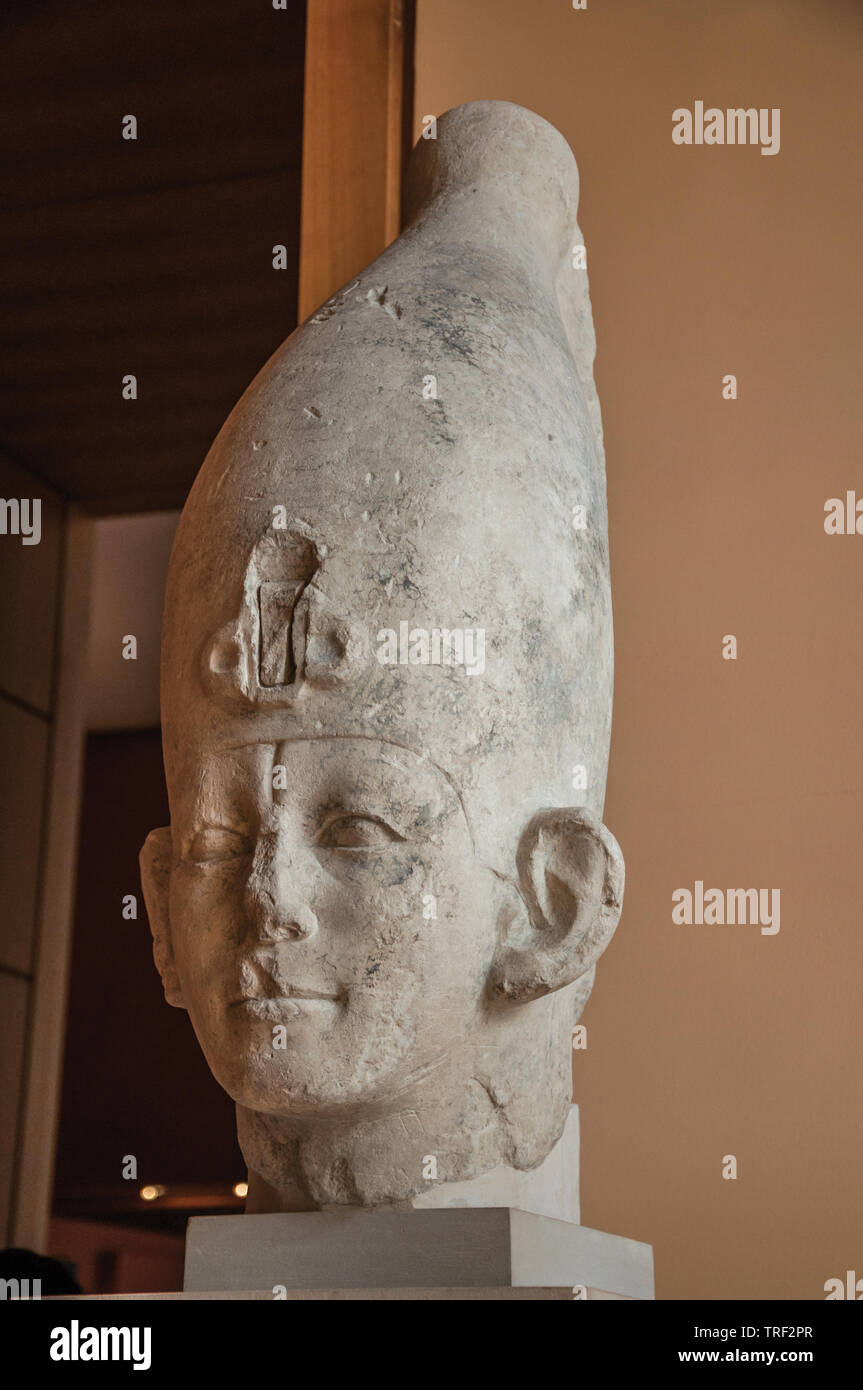

If the only heir was a woman, her husband could become the next pharaoh. Sometimes, a brother would become the next pharaoh after the previous king’s dead if there was no son to inherit. Inheritance of the throne usually passed from a father to his eldest son but there were exceptions. They also ran long foot races to build endurance and went on hunting and fishing expeditions.
#Pharaoh head how to#
Princes went to the royal stables where they learned how to ride and break wild horses. Many of these lessons focused on building physical strength because the pharaoh often fought at the head of his army.
#Pharaoh head series#
The crown prince began training to become the pharaoh as a young child through a series of lessons. © Tiffany Silva - Sarcophagus of Tutankhamun
#Pharaoh head manual#
Flail - came from a manual threshing device that had a long handle with a free-swinging stick that farmers used to beat wheat.Pharaoh holds it in statues and on sarcophagi, with the flail, crossed over his/her chest. Crook - a blue and gold stripped staff with a hook on one end.This headdress is part of some pharaoh’s death masks and sarcophagi (coffins) and King Tut wears it in his death mask. Nemes Headdress - a blue and gold stripped head-cloth falling down both sides of the head, the front of each shoulder and the back.Pharaoh wore it while performing religious rituals. Atef Crown - a white crown decorated with ostrich feathers and topped by a small sun disc.Pharaoh wore it in battle and during some ceremonies. Blue Crown - a headdress made of blue cloth or leather and decorated with discs of bronze or gold.This crown combined the Red and White Crowns, with the White Crown inside the Red Crown.

Double Crown - the combined crown of Upper and Lower Egypt which symbolized the pharaoh’s control over them.© Tjflex2 - The Golden Mask of Psusennes I He ruled during the peak of ancient Egypt's power.Ĭlick here for a list of the 25 most famous pharaohs of ancient Egypt Amenhotep III was the son of Thutmose IV and was the 9th pharaoh of the 18th dynasty.Thutmose was buried in the Valley of the Kings. He ruled Egypt for 45 years and created the largest empire ever in Egypt. Thutmose III was the 6th pharaoh of the 18th dynasty.Djoser ruled during the Old Kingdom and built the first true stone pyramid, the Step Pyramid.Khufu also known as Cheops, ruled during the Old Kingdom and built the Great Pyramid.He built Amarna as the center for the worship of his god, Aten. Scholars call him the hieratic pharaoh because he forbade the worship of the old gods. Akhenaten ruled during the New Kingdom for less than 20 years.She organized military campaigns and sent out trade expeditions to bring exotic goods to Egypt. Hatshepsut ruled during the New Kingdom for around 20 years.Ramses III was the last king of the New Kingdom and is considered the last great pharaoh.He is probably the most prolific of the ancient Egyptian pharaohs, siring over 100 children with more than a dozen wives. He built all over Egypt and many of his statues and temples are still standing today. Ramses II ruled during the New Kingdom for either 66 years.She ruled beside three pharaohs including her young son and was the lover of Marc Antony. Cleopatra VII was the last pharaoh of Egypt who tried to hold off the Romans under Augustus.Later pharaoh's erased his name from some king lists so scholars found his tomb's goods intact in the 1920s. Tutankhamun (aka King Tut) restored the capital to Thebes after the death of Akhenaten and restored the worship of the old gods.Below is a top 10 of the most famous Egyptian pharaohs:


 0 kommentar(er)
0 kommentar(er)
